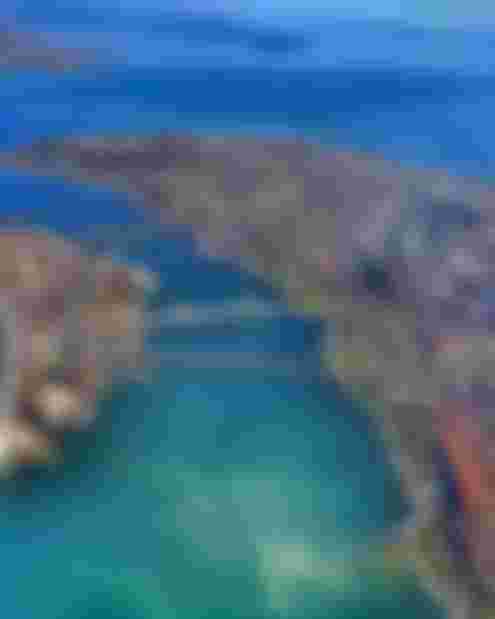Conquest of Istanbul.
Sultan Mahmud II from Sahaba.
(Fatih Sultan Mehmet Han)
(30 March 1432 - 3 May 1461) The seventh sultan of the Ottoman Empire.
The Prophet (peace and blessings of Allaah be upon him) said, “Surely Constantinople will be conquered. What a good Amir of that force. What an excellent force that is. ” (Musnad Ahmad 4/335, Hadith: 18956)

From the very beginning of Islam, the Muslim Mujahideen fought hard to conquer Constantinople in the hope of fulfilling the prophecy of the Prophet (peace and blessings of Allaah be upon him) and becoming one of the lucky emirs and members of the best party with glorious victory and good news. And the brightest example of this is Hazrat Abu Ayyub Ansari, one of the close companions of the Prophet (peace and blessings of Allaah be upon him).
Hazrat Abu Ayub Ansari agreed. Who is one of the Ansar Companions of Medina. After the migration of the Prophet (peace and blessings of Allaah be upon him) to Medina, he was the first to have the privilege of hosting the Prophet (peace and blessings of Allaah be upon him).

Hazrat Abu Ayyub Ansari agreed in 64 AD when the first Muslim army started marching towards Constantinople. Even at the age of 6 years, he jumped into the sword. The only goal was to be a proud partner in the prophecy of the Prophet (peace and blessings of Allaah be upon him). But during the war he became seriously ill. At this time he bequeathed his tomb to be given at the entrance of Constantinople. So that the horses of the victorious Muslim Mujahideen of Constantinople crossed his grave.
Although the name of the Ottomans in the conquest of Constantinople is remembered in history, Muslim rulers have been marching towards Constantinople for centuries.
Hazrat Uthman. During the reign of Hazrat Muawiyah agreed. When the navy was formed by the Greeks clashed. From then on, plans to conquer Constantinople, the Byzantine capital, began.

The Muslims led the first expedition to Constantinople with the consent of the Umayyad Caliph Hazrat Muawiyah. During its rule. The expedition was led by Yazid in 64-65 AD.
The second expedition to Constantinople took place during the reign of the 8th Umayyad Caliph Sulaiman Ibn Abdul Malik in 617-18 AD. And every time they fail.
The Abbasid 3rd Caliph Al Mahdi, under the leadership of Prince Harunur Rashid, laid siege to Constantinople. The Abbasids succeeded in this campaign in 62 AD. The Byzantines agreed to pay taxes.

During the reign of Caliph Harun, the then emperor Nesiphorus refused to pay taxes and the Caliph launched an expedition and captured Heraclius. Yet Constantinople remained invincible.
Later, when the Abbasid caliphate clashed, the Muslims' dream of conquering Constantinople remained unfulfilled. The Seljuks also made some expeditions to Constantinople. However, it was not very fruitful.
Ottoman era:
After the Battle of Nicopolis (1396), Sultan Bayazid I decided to conquer Constantinople. But at the instigation of the Byzantines, Timur Long advanced on Ankara with the aim of destroying the Ottoman Empire. In 1402, the two Muslim forces of Bayazid and Taimur came face to face. On this voyage Constantinople was saved from the Ottomans.
In 1421, Sultan Murad II came to power in the Ottoman Empire. After Murad II ascended the throne, a conspiracy by the Byzantines led to a series of revolts in the Ottoman Empire. Sultan Murad II became angry and set out for the Byzantines to attack Constantinople.

In 1421 he laid siege to Constantinople. And formed a fierce resistance against the Byzantines. Just when Sultan Murad was on the verge of conquering Constantinople, Murad's brother Mostafa instigated a terrible revolt in Asia Minor at the instigation of the Byzantines. Murad returned and suppressed the rebellion with a strong hand. And executed Mustafa. As a result, Constantinople was saved again.
Sultan Muhammad was born on March 30, 1432, in the then Ottoman capital, Andrei Naples. From an early age, Sultan Murad appointed some religious teachers for Prince Muhammad. Among his teachers, Ak Shamsuddin is particularly notable. He was the one who inspired Sultan Muhammad to conquer Constantinople from an early age.
At the age of 11, Sultan Muhammad took charge of the Emasia region. On July 12, 1444, after a 10-year peace treaty between Sultan Murad II and European Christians, his son, 12-year-old Sultan Muhammad II, came to power and retired.

Within two months of seeing the 12-year-old Muhammad in power, he broke the peace treaty and invaded the Ottoman Empire. At that time, when Sultan Muhammad requested his father to return to power, Sultan Murad refused. At that time, Sultan Muhammad became angry and said, "If you are a Sultan, come forward and lead your troops." And if I am a sultan, I instruct you to lead my troops. "
On 10 November 1444, Sultan Murad II returned to power. And in the Battle of Vernar, the combined Christian forces of Hungary, Poland, and Vallacia, led by Emperor Vladislav of Poland and General John Haniadi, were tragically defeated.
When Sultan Murad II died on 13 February 1451, Sultan Muhammad II ascended the throne for the second time. The Byzantines began conspiring again. They thought the Sultan was as weak as before and tried to provoke a revolt by freeing the Sultan's brother who was in their hands. But the Sultan thwarted all their conspiracies and became determined to prepare for the siege of Constantinople.
Constantinople was an important city in the Byzantine Empire from about the 3rd century AD. It has water on three sides and land on one side. The Bosphorus Strait to the east, the Golden Horn to the north, and the Gulf of Marmara to the south. It was at the junction of the Mediterranean and Black Seas and on the shores of the Bosphorus Strait. Due to its important geographical location, it was the most impregnable city in the world at that time.
Sultan Muhammad II undertook the highest war preparations in the world for the conquest of Constantinople. He made the longest-range cannon known as the ‘Royal Cannon’ through the Hungarian cannon maker ‘Urban’. After proper preparations, he laid siege to Constantinople on 6 April 1453.
The Ottoman forces launched an attack on the land as there were waters on 3 sides of Constantinople. The Golden Horn is an important seaport. Fearing an attack, the Byzantine forces chained the Golden Horn. The Ottoman navy was prevented from entering the Golden Horn by the Bosphorus.
After securing the Golden Horn with chains, the Byzantine forces resisted the Ottomans with maximum force on the ground. The Ottomans could not cross the impenetrable wall of Constantinople. One tactic after another of Sultan Muhammad was successfully defeated by the Byzantine forces.
In a dream, Abu Ayub Ansari (may Allah be pleased with him) said:
The Ottoman Sultan Muhammad II was feeling uneasy at not being able to occupy Constantinople by continuous siege. The sultan declared a truce because of the exhaustion of the army and the long line of corpses. Then for some time he meditated and prayed to God for the victory of Constantinople. In it he saw in a dream the beloved companion of the Prophet (peace be upon him), Hazrat Abu Ayyub Ansari (may Allah be pleased with him). He inspired Sultan Muhammad to conquer Constantinople and find his grave not far from Constantinople. Later, the grave of Abu Ayyub Ansari (Razi.) Was confirmed by digging in the place indicated in the dream.
The historic decision of Sultan Muhammad and the conquest of Constantinople:
It has already been said that the Ottomans had to confine their attack to the land only because of the chains in the face of the Golden Horn. Sultan Muhammad made a historic decision to attack from the side of the Golden Horn. He surprised the world by sailing on land.
At night, he lubricated a piece of tree with fat, and in it 60 warships sailed about 10 miles from the Bosphorus to the Golden Horn.
Eventually the Ottomans created an opportunity to attack both the Golden Horn and the land. When the Byzantines sensed and deployed troops at the Golden Horn, the defenses were weakened.
On the night of 27 May 1453, Sultan Muhammad declared a final attack on Constantinople. On the morning of 29 May, the Byzantine forces were defeated by a series of Ottoman attacks. At that time ordinary people and even women came down to the battlefield to resist the Ottomans.
After breaking through the walls of the fort, Sultan Muhammad came forward with his special Janissary forces. Hasan Aga, one of their heroic soldiers, bravely resisted the Byzantine army and was able to fly the Ottoman moon-emblazoned flag on the fort. It is said that the first Ottoman flag was flown over St. Romans (now Topkapi Palace). Seeing the flags on the fort increased the Ottomans' interest and as they advanced the final outcome of the battle was determined.
Seeing the impending defeat, the Roman emperor Constantine took off his special royal attire and went to war. And died. His death marked the end of the 11th century Byzantine Empire and opened a new door for Muslims.
On 29 May Sultan Muhammad entered Constantinople in triumphant attire. He ensured the safety of people of different religions. Christian historians also reverently remember the kindness he showed to women and children.
Sultan Muhammad changed the name of the city to Islam Bull. Later it was changed to what is now Istanbul. He moved the capital of his empire from Andrianopol to Istanbul. Since then he has been known as Muhammad al-Fatih, the conqueror Muhammad.





